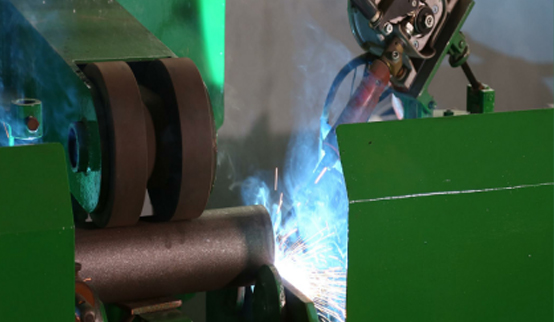 Afrikaans
Afrikaans  Albanian
Albanian  Amharic
Amharic  Arabic
Arabic  Armenian
Armenian  Azerbaijani
Azerbaijani  Basque
Basque  Belarusian
Belarusian  Bengali
Bengali  Bosnian
Bosnian  Bulgarian
Bulgarian  Catalan
Catalan  Cebuano
Cebuano  Corsican
Corsican  Croatian
Croatian  Czech
Czech  Danish
Danish  Dutch
Dutch  English
English  Esperanto
Esperanto  Estonian
Estonian  Finnish
Finnish  French
French  Frisian
Frisian  Galician
Galician  Georgian
Georgian  German
German  Greek
Greek  Gujarati
Gujarati  Haitian Creole
Haitian Creole  hausa
hausa  hawaiian
hawaiian  Hebrew
Hebrew  Hindi
Hindi  Miao
Miao  Hungarian
Hungarian  Icelandic
Icelandic  igbo
igbo  Indonesian
Indonesian  irish
irish  Italian
Italian  Japanese
Japanese  Javanese
Javanese  Kannada
Kannada  kazakh
kazakh  Khmer
Khmer  Rwandese
Rwandese  Korean
Korean  Kurdish
Kurdish  Kyrgyz
Kyrgyz  Lao
Lao  Latin
Latin  Latvian
Latvian  Lithuanian
Lithuanian  Luxembourgish
Luxembourgish  Macedonian
Macedonian  Malgashi
Malgashi  Malay
Malay  Malayalam
Malayalam  Maltese
Maltese  Maori
Maori  Marathi
Marathi  Mongolian
Mongolian  Myanmar
Myanmar  Nepali
Nepali  Norwegian
Norwegian  Norwegian
Norwegian  Occitan
Occitan  Pashto
Pashto  Persian
Persian  Polish
Polish  Portuguese
Portuguese  Punjabi
Punjabi  Romanian
Romanian  Russian
Russian  Samoan
Samoan  Scottish Gaelic
Scottish Gaelic  Serbian
Serbian  Sesotho
Sesotho  Shona
Shona  Sindhi
Sindhi  Sinhala
Sinhala  Slovak
Slovak  Slovenian
Slovenian  Somali
Somali  Spanish
Spanish  Sundanese
Sundanese  Swahili
Swahili  Swedish
Swedish  Tagalog
Tagalog  Tajik
Tajik  Tamil
Tamil  Tatar
Tatar  Telugu
Telugu  Thai
Thai  Turkish
Turkish  Turkmen
Turkmen  Ukrainian
Ukrainian  Urdu
Urdu  Uighur
Uighur  Uzbek
Uzbek  Vietnamese
Vietnamese  Welsh
Welsh  Bantu
Bantu  Yiddish
Yiddish  Yoruba
Yoruba  Zulu
Zulu conveyor pulley components
Understanding Conveyor Pulley Components A Comprehensive Overview
Conveyor systems are integral to various industries, facilitating the transportation of materials efficiently and with minimal effort. At the heart of these systems lies the conveyor pulley, a critical component that plays a significant role in movement and stability. Understanding the components of a conveyor pulley can enhance efficiency, reduce maintenance costs, and improve overall system functionality.
What is a Conveyor Pulley?
A conveyor pulley is a cylindrical device used in conveyor systems to support and guide the belt. It helps in changing the direction of the belt and is crucial in ensuring that the materials being transported remain stable and properly aligned. Conveyor pulleys can be classified into different categories based on their function, namely drive pulleys, return pulleys, bend pulleys, and snub pulleys.
Key Components of Conveyor Pulleys
1. Drum Shell The drum shell is the cylindrical body of the pulley, typically made from robust materials such as steel or aluminum. Its design directly affects the pulley’s performance, as it must withstand the wear and tear from the bulk materials being transported.
2. End Disc The end discs are the circular plates fixed to either end of the drum shell. They provide structural integrity to the pulley system, ensuring that the conveyor belt remains properly aligned during operation. The end discs must be constructed to match the durability of the drum shell, often utilizing welded seams to withstand heavy loads.
3. Shaft The shaft is a vital component that transmits power from the motor to the pulley. It serves as the core around which the drum shell rotates. Proper selection and installation of the shaft are essential as it must handle high torsional loads and rotational stresses without failure.
conveyor pulley components

4. Lagging Lagging is a surface material applied to the drum shell to improve friction between the pulley and the conveyor belt. It enhances traction and reduces slippage, ensuring that the belt maintains a steady movement even under heavy loads. Various lagging materials, such as rubber or ceramic, can be used depending on the specific application and environmental conditions.
5. Bearings Bearings facilitate smooth rotation of the pulley by reducing friction between the moving parts. They are critical for the longevity of the conveyor system, as worn-out bearings can lead to increased resistance and premature failure. The choice of bearings depends on the load requirements and environmental factors like temperature and moisture.
6. Seal Seals are used to protect the bearings from dust, dirt, and water ingress, extending their lifespan and reducing maintenance needs. Proper sealing is crucial in preventing lubrication loss and ensuring optimal performance, especially in harsh operating conditions.
Importance of High-Quality Conveyor Pulley Components
The effectiveness and longevity of conveyor systems rely heavily on the quality of their components. High-quality pulleys reduce the likelihood of system failures, ensuring smooth and uninterrupted operation. Regular inspections and maintenance can identify wear and tear early, allowing for timely replacements of pulleys or their components, thus minimizing downtime.
Moreover, purchasing conveyor pulleys from reputable manufacturers ensures that industry standards are met. Quality components can significantly enhance the safety and efficiency of operations, contributing to the overall productivity of a facility.
Conclusion
In summary, conveyor pulleys are essential components that influence the performance and efficiency of conveyor systems. By understanding the various components, such as the drum shell, end discs, shafts, lagging, bearings, and seals, operators can make informed decisions regarding maintenance and upgrades. Investing in high-quality conveyor pulley components not only boosts operational efficiency but also enhances the reliability and safety of material handling processes. As industries continue to evolve, so too should our approach to managing these integral systems, focusing on quality and performance to meet modern demands.
-
Revolutionizing Conveyor Reliability with Advanced Rubber Lagging PulleysNewsJul.22,2025
-
Powering Precision and Durability with Expert Manufacturers of Conveyor ComponentsNewsJul.22,2025
-
Optimizing Conveyor Systems with Advanced Conveyor AccessoriesNewsJul.22,2025
-
Maximize Conveyor Efficiency with Quality Conveyor Idler PulleysNewsJul.22,2025
-
Future-Proof Your Conveyor System with High-Performance Polyurethane RollerNewsJul.22,2025
-
Driving Efficiency Forward with Quality Idlers and RollersNewsJul.22,2025





























